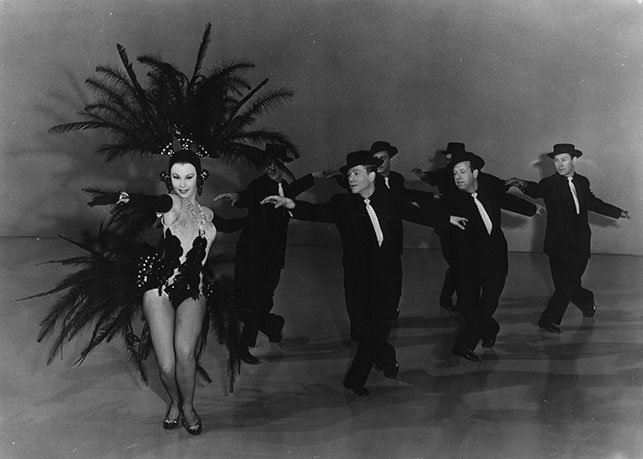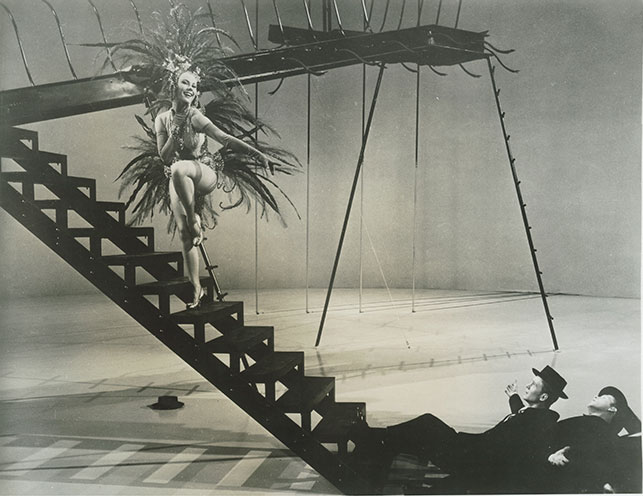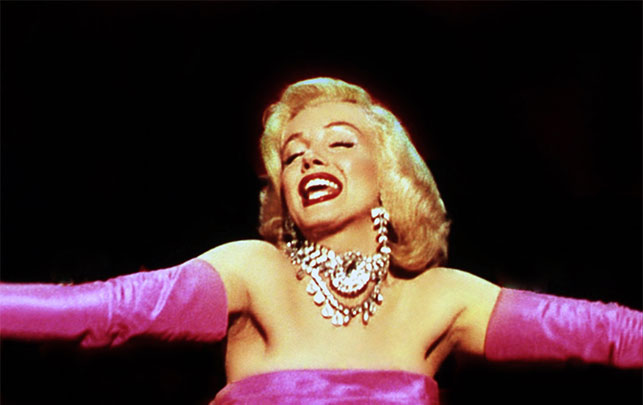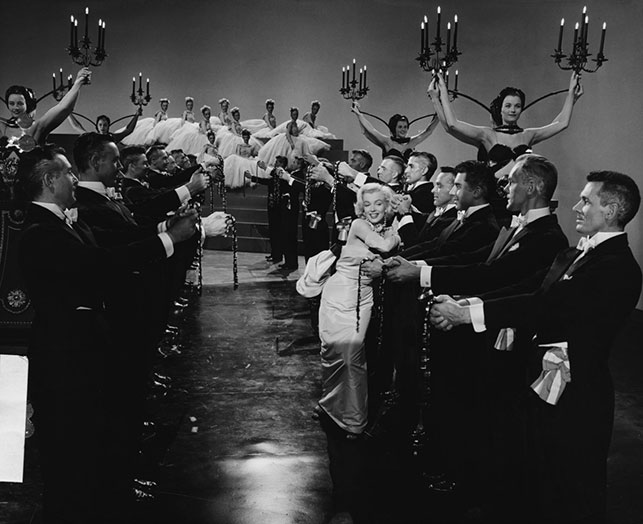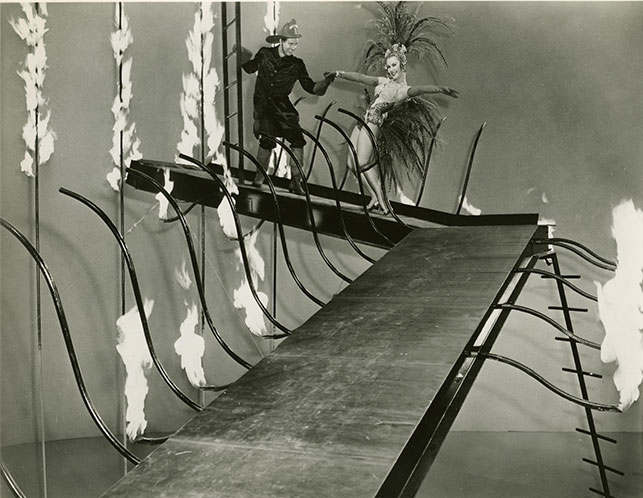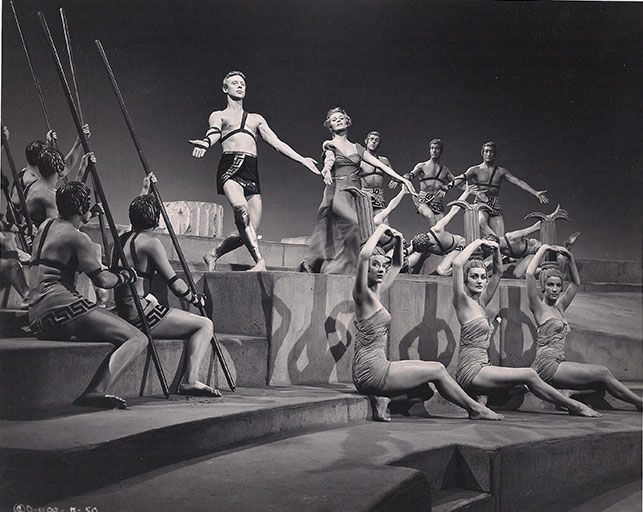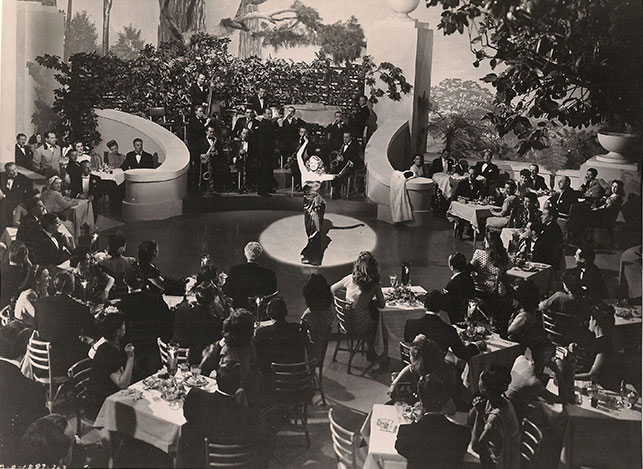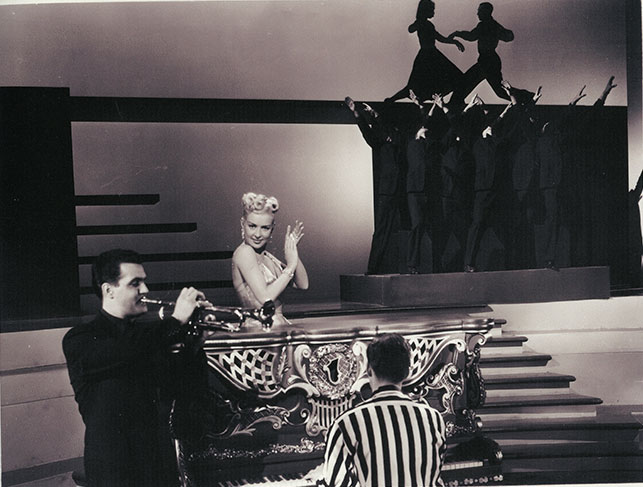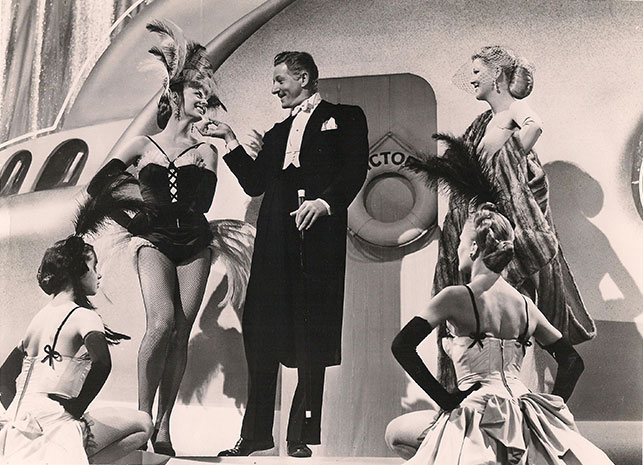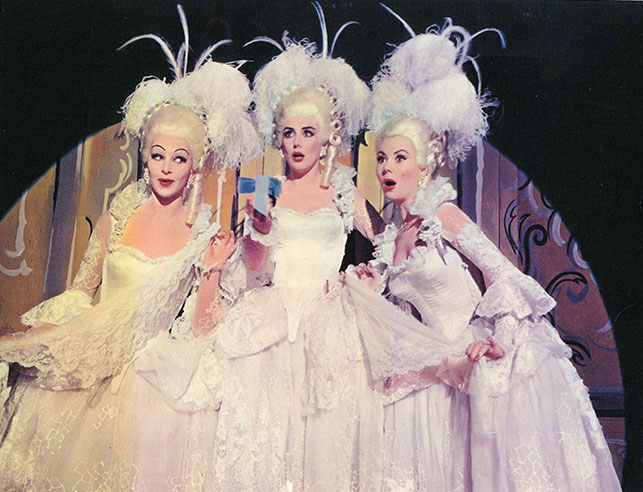Can a dance number change your life? “I Don’t Care,” with wildly imagined choreography by Jack Cole (1911–1974) for Mitzi Gaynor in The I Don’t Care Girl, changed mine. As a dance critic of 30 years, weaned on Balanchine and Cunningham, I’m here to tell you that once you’ve gone Jack, there’s no going back.
MoMA will screen The I Don’t Care Girl as one of 18 films in All That Jack (Cole), an historic career retrospective of the mega-talented, prodigious, and vastly influential Hollywood choreographer. MoMA’s compendium of Cole-choreographed films spans musicals made at Columbia Pictures, Twentieth Century-Fox, and Metro-Goldwyn-Mayer from 1945 to 1960. We’re bundling talks and interviews with those who worked with him as well as contemporary choreographers and other prominent fans, all of whom wish to honor an American dance great. MoMA film curator Dave Kehr and I have acted as dance-detectives, assembling a dream movie schedule. Please join us for the wonderful All That Jack (Cole) at MoMA, January 20–February 4.
“I Don’t Care” is one of a trio of song-and-dance numbers Cole inserted in the Twentieth Century-Fox biopic about vaudeville hottie Eva Tanguay, at the behest of studio boss Darryl Zanuck, after film production had closed. The contrast between the vivacious (and anachronistic) Cole numbers and what occurs around them is what makes viewing this movie so much fun. The film’s two other numbers, “The Johnson Rag” and “Beale Street Blues,” each a standalone dance masterpiece, constitute must-viewing for the Cole-curious.
None less than Kenneth Anger, the experimental filmmaker and author of Hollywood Babylon, first brought Cole to my attention. When I was introduced to Kenneth at a film screening, he wasted no time in telling this dance writer, “Someone needs to write about Jack Cole.” The year was 2009 and soon after came my Los Angeles Times article about Cole’s “Diamonds Are a Girl’s Best Friend” for Marilyn Monroe in Gentlemen Prefer Blondes.
As a dance number, “Diamonds” is as dazzling and seductive as its subject matter. Burning a hot-pink hole at center-screen in a strapless evening gown and impossibly blonde hair, Monroe, a near dance beginner, uses the power of her moving body to bind myriad filmic elements into one forceful unit. Story, music, lyric, concept, character, design, costume, and great choreography all meld with utter originality courtesy of Jack Cole. In its seemingly eternal entertainment appeal, “Diamonds” bears the thumbprint of a creative genius.
But it was Cole’s kooky “I Don’t Care,” in which Mitzi Gaynor bump-and-grinds her way up a long diagonal ramp, molting feathers and kicking men in porkpie hats as she advances, that put me on a new path. In four compressed minutes the number powers through mini-chapters like an early music video; it is a complete story unto itself. Cole crams more action, intrigue, mystery, symbolism, high-kicking dance, and just plain fun into “I Don’t Care” than anything I had ever seen in Hollywood dance. It opens with an underground camera peering through a glass mirror, into which Gaynor gazes (and it promptly cracks). It has a drop into a water hole. It closes with the entire sequence going up in flames. My admiration for this outré artist soared and I was hooked. I soon began to reject any dance that did not include both fire and feathers, a phase from which I readily admit, eight years hence, I have not fully recovered.
Cole’s most widely known credential was his innovation in and codification of American jazz dance. Starting in the 1930s, with heavy borrowings from African American popular dance, he crafted jazz for his nightclub act and then transferred it first to the screen, and later to the Broadway stage. His rapid metamorphosis from modern dance (he danced with Denishawn in its waning years) through rich forays in ethnic dance, to arrive at his own muscular brand of vivacious jazz is in strong evidence in his Columbia Pictures output. These film “captures” from the mid-1940s belong in the annals of American art history. They belong in a museum!
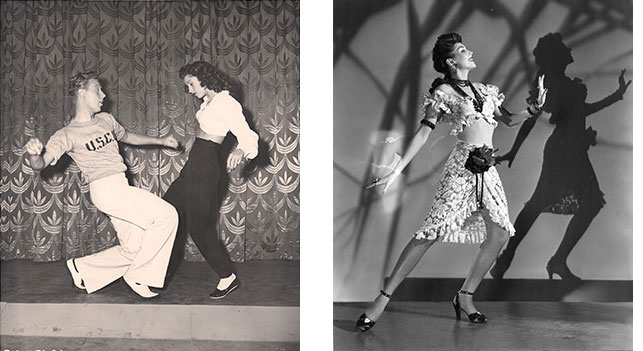
From left: Tars and Spars. 1946. USA. Directed by Alfred E. Green; The Thrill of Brazil. 1946. USA. Directed by S. Sylvan Simon
In Tars and Spars, Ballets Russes dancer Marc Platt does double-duty as a sweatshirt-clad boogie-woogie dancer, while in The Thrill of Brazil, Ann Miller gives the frenetic tap-dancing a rest to flash the sensuality only Cole saw in her—and brought out of her.
At Columbia, as well, Cole fired up Rita Hayworth’s physical allure. Lovely Rita was typecast as the dance goddess Terpsichore in Down to Earth.
In Gilda’s “Put the Blame on Mame,” film noir’s dance apotheosis, Cole choreographed for Hayworth’s lion’s mane of hair.
Betty Grable worked primarily with Hermes Pan at Fox. Transferring to Cole for three movie titles, Grable not only sharpened her dance chops, but she got to do comedic dancing—and she was superb. Dressed in a William Travilla flesh-toned gown, she’s a wizened veteran of the love wars in “Bettin’ on a Man” from Meet Me After the Show.
In several Fox pictures, Cole featured his protégée and muse Gwen Verdon—setting her up for her imminent success with Bob Fosse on Broadway—and never more deliciously than in On the Riviera. In screening Riviera as our opening-night film, we fete The Great Gwen, the ultimate Jack Cole dancer.
Cole also worked at MGM, where the big budgets were. His glorious pink-toned grand valse for The Merry Widow surely had the movie’s two non-dancing stars, Lana Turner and Fernando Llamas, hissing, “Get out of the way!” rather than be mowed down by Cole’s waltzing hordes.
Also at MGM, Cole worked on George Cukor’s Les Girls, with its brilliant Rashomon-inspired number, “Ladies in Waiting,” one of my personal favorites.
I’m anticipating that MoMA’s first-ever film survey of Cole will spur his reassessment not just as a great, under-recognized American dance artist, but also as a talented and influential filmmaker. Jack Cole was an auteur-choreographer—with or without feathers!
Los Angeles–based dance critic Debra Levine, co-curator of All That Jack (Cole), blogs about dance and film at arts·meme.


